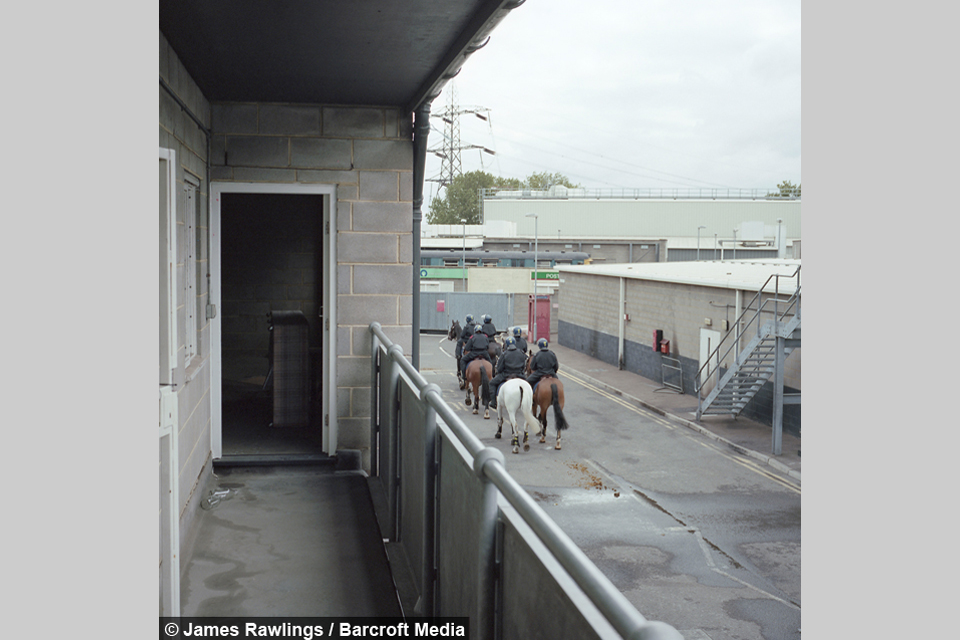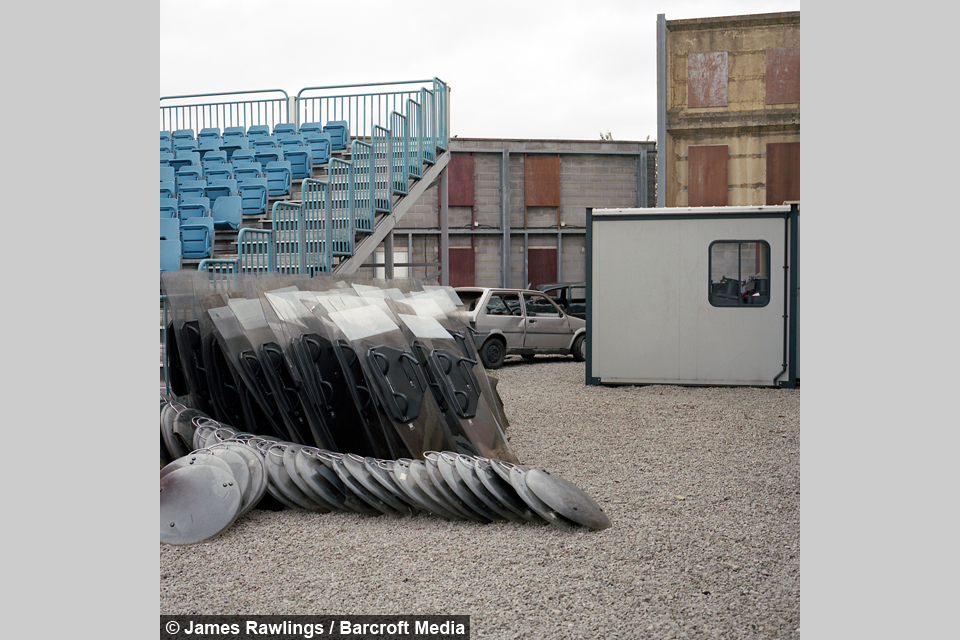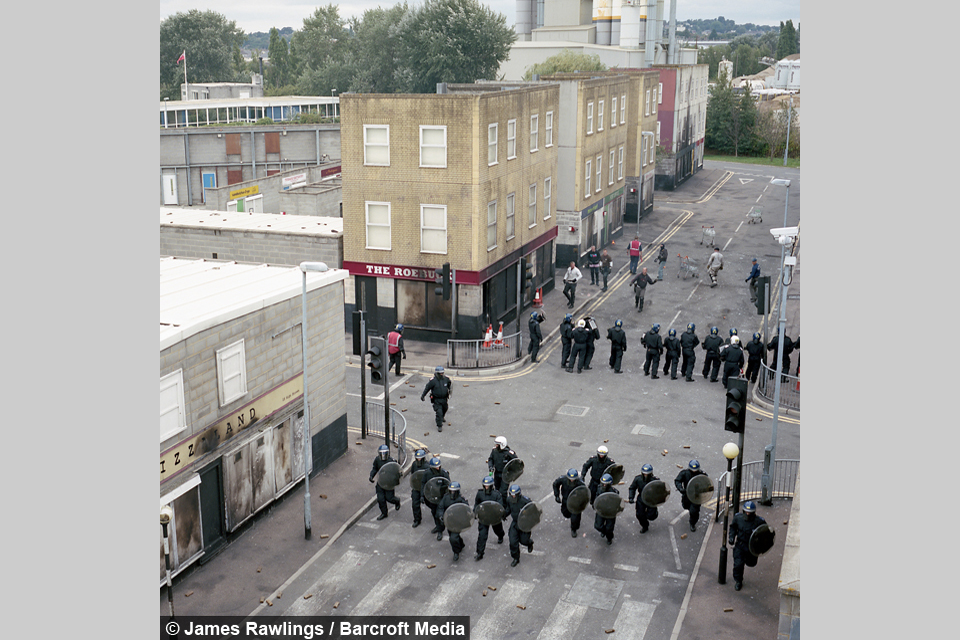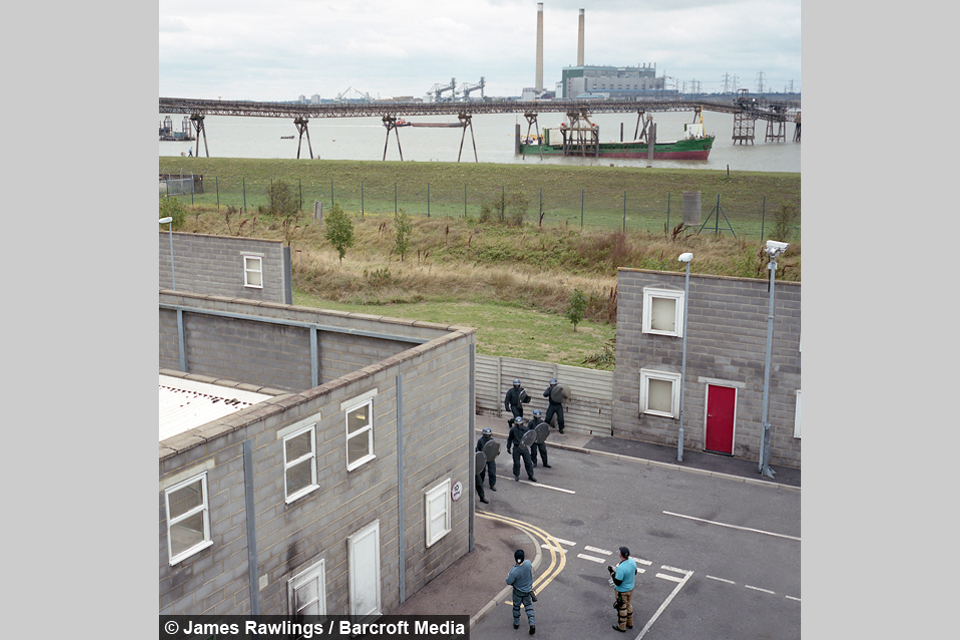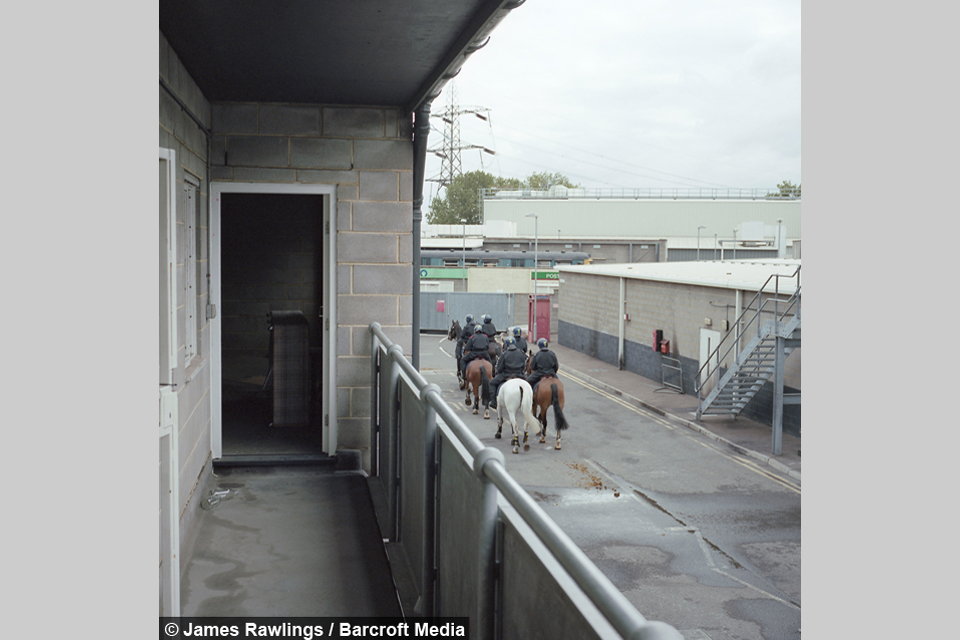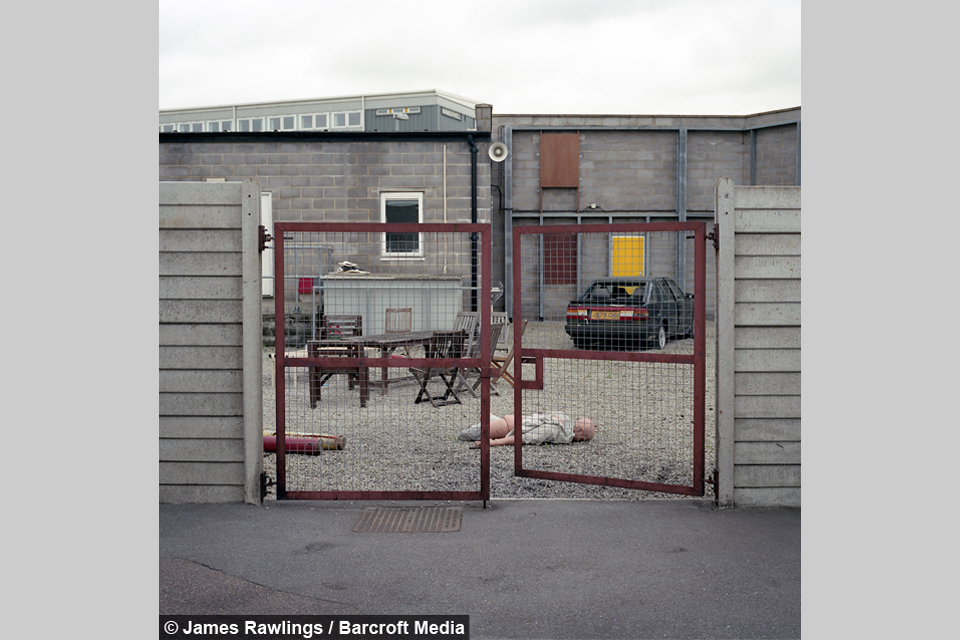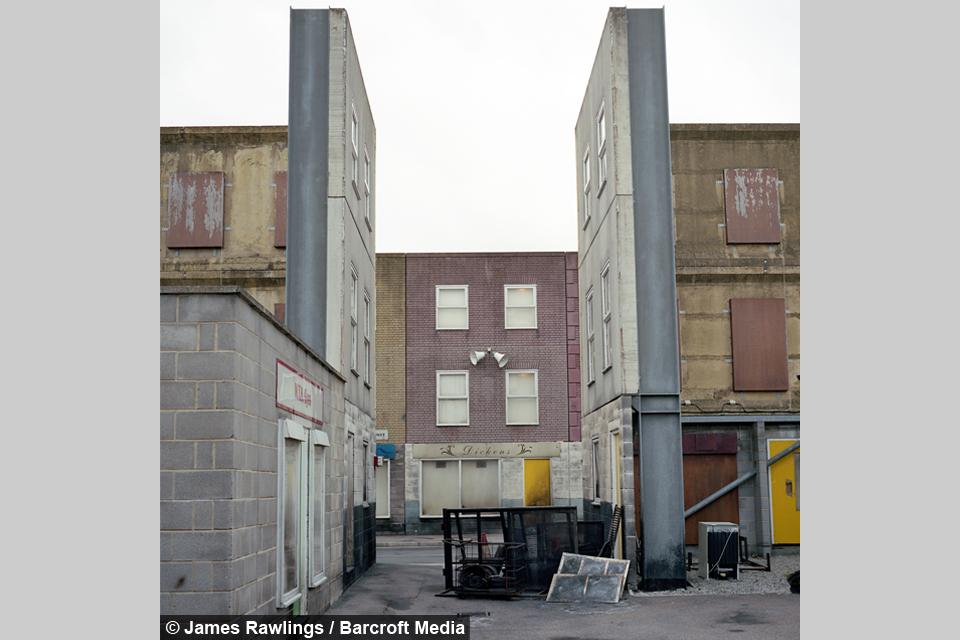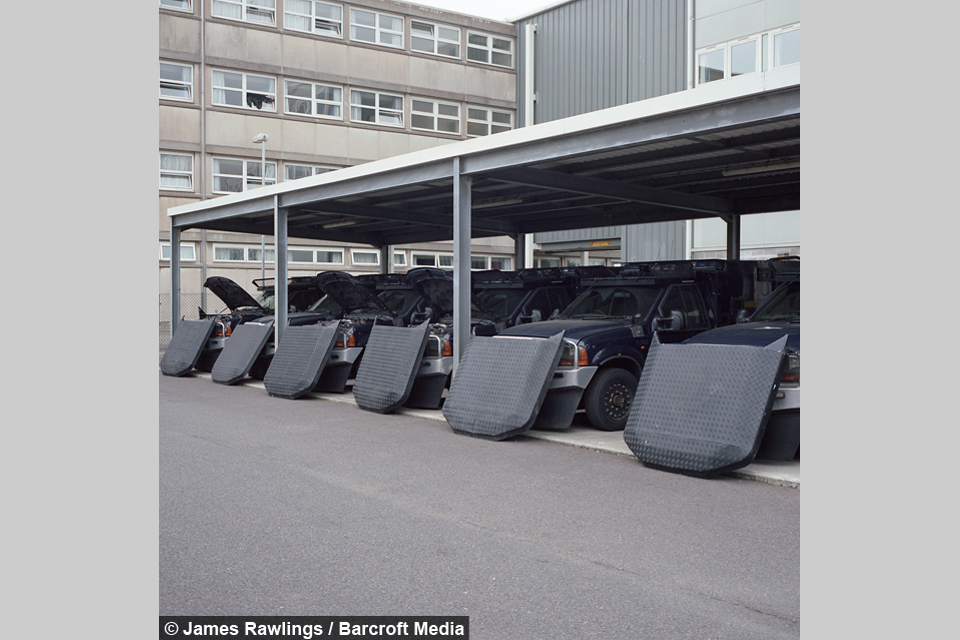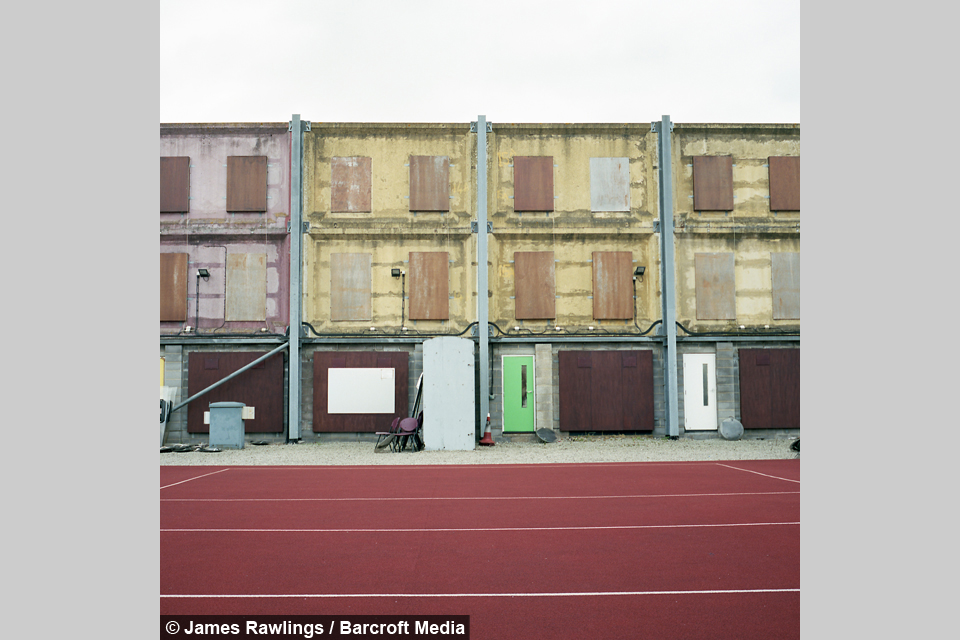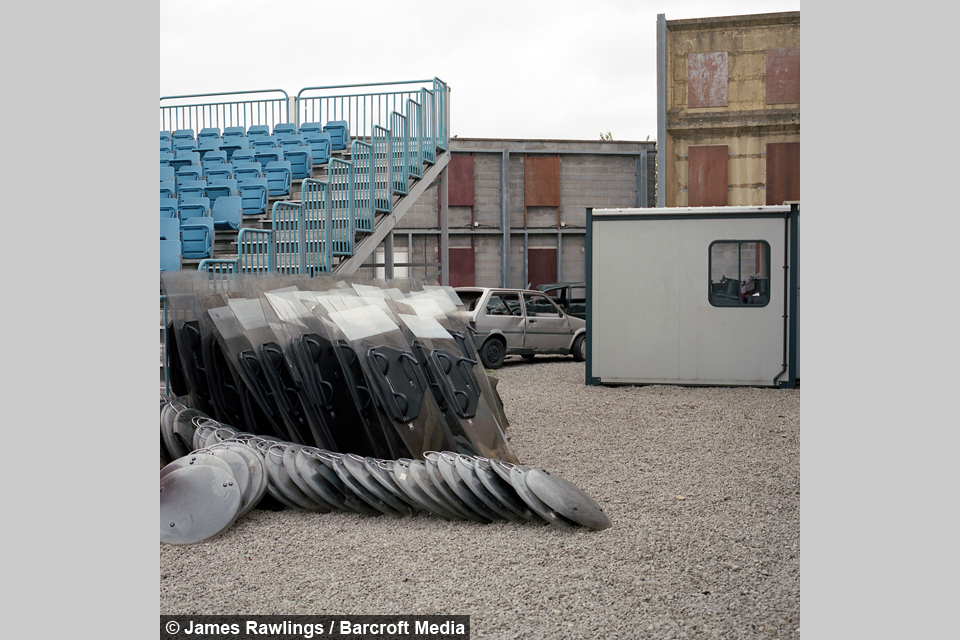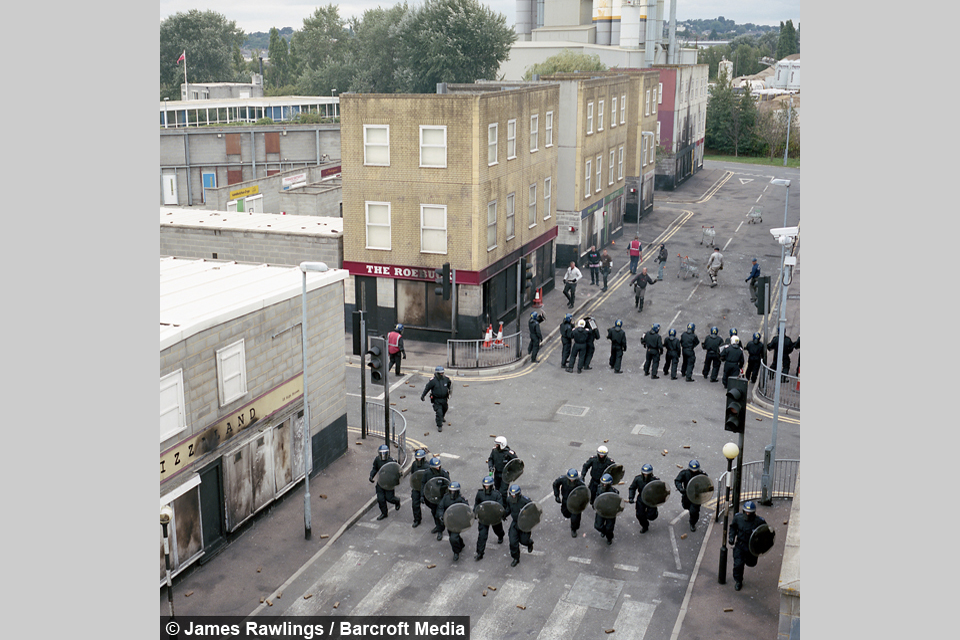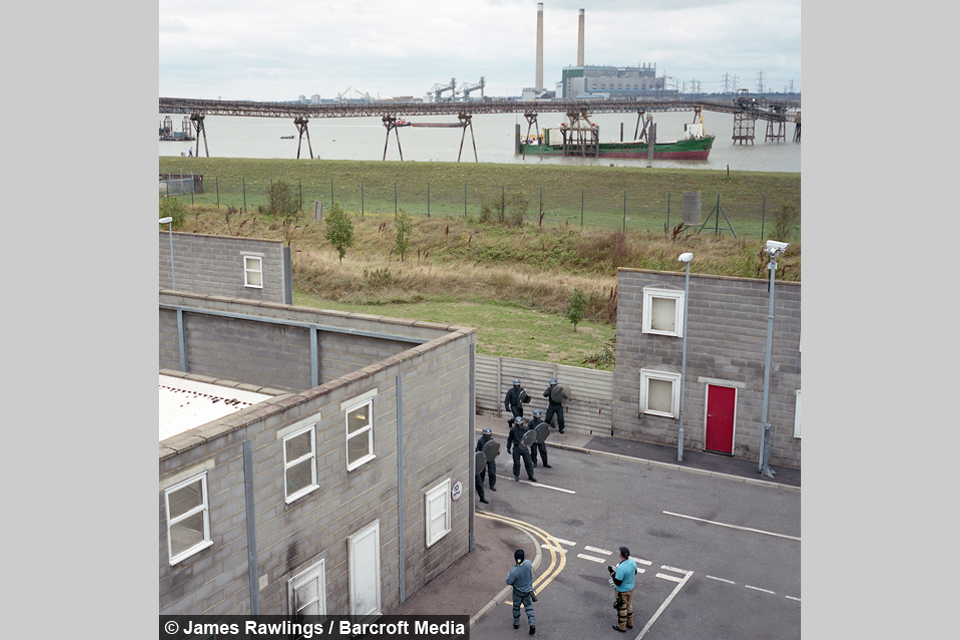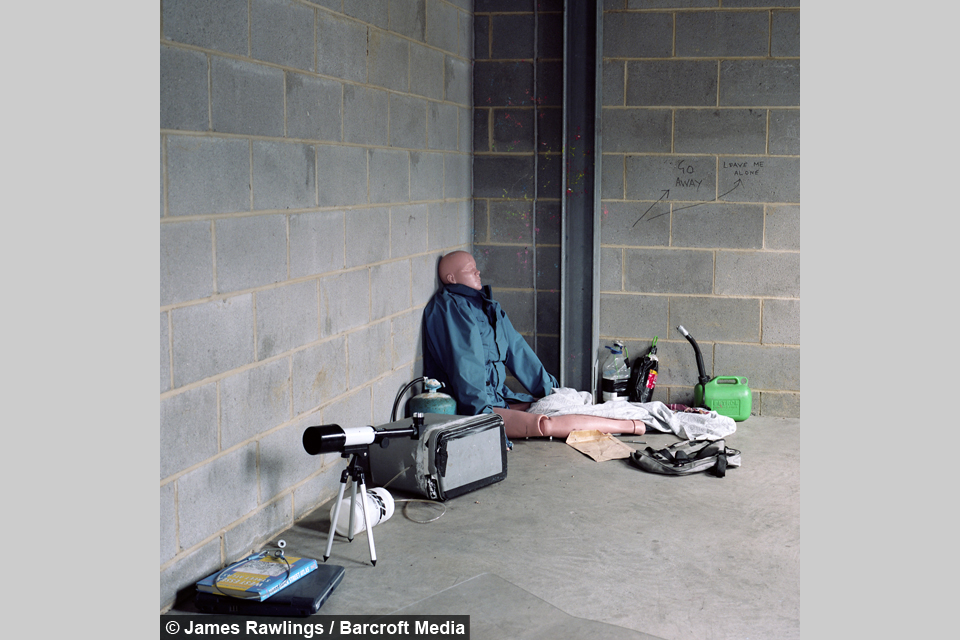Police Academy: Inside The Metropolitan Police Riot Training Centre
By Thomas Midlane @GoldenLatrine
Scroll down for the full story
At first appearance this may look like an outbreak of inner city violence, but many of the "buildings" pictured are, in fact, nothing but empty shells and the angry "mob" is made up of in-character policemen.
The images offer a snapshot into life at the Metropolitan Police Specialist Training Centre in Gravesend, where officers are trained in various forms of public disorder and firearm use.
The behind the scenes images were taken by photographer James Rawlings, who gained unprecedented access to the site after several months of negotiations.
"Although I didn’t have to submit a formal proposal, there was a lot of ‘red tape’ and discussion as to what I could and couldn’t show," Rawlings said.
"For example, using a person’s face could put them in danger or single them out when they later came into contact with the public.
"As a consequence, I knew from the outset I’d have to photograph people from behind or from afar – I was always going to be a step back from the action."
Training at the site is intended to help prepare officers for the kind of chaotic situations they may face in real-life riots.
Rawlings, who lives in Tottenham, where the 2011 London riots began, was given permission to document a scene involving 15 policemen pretending to be a mob - antagonising other officers who were acting as the response unit, slowly dispersing and detaining the mob.
The set entitled 'Control', forms part of his series The Architecture of Conflict, documenting synthetic conflict around the world.
"I photographed simulations of riot control. It was more reminiscent of aftermath photography than something more high octane like embedded journalism. ‘Control’ is about showing the spaces we create to manage the conflict we encounter," Rawlings said.
"On shoot day, they had 10-15 officers form a mob, armed with This group of officers were completely in character. Obviously, it’s still essentially a form of role-play, but officers glean a very real sense of what these riot situations feel like.
"The ‘mob’ aggressively goaded and threatened the officers with physical and verbal missiles – they really took it to a frightening level.
"On shoot day, they had 10-15 officers form a mob, armed with This group of officers were completely in character. Obviously, it’s still essentially a form of role-play, but officers glean a very real sense of what these riot situations feel like.
"The ‘mob’ aggressively goaded and threatened the officers with physical and verbal missiles – they really took it to a frightening level.
"There were officers there who’d never experienced this sort of training before, and for them, on street level, I imagine it felt pretty real. For me, it was a different experience.
"Viewing it from the rooftops, or down alleyways on the peripheries, I was allowed to walk around, to step back and see more than just the immediate action."
Rawlings added: "Conflict has always interested me: it can be terrifying, physically and emotionally, and yet some seek it out.
"The idea for The Architecture of Conflict began with a project at university, for which I documented a group of people simulating warfare with replica guns that fired plastic projectiles.
"It was fascinating to observe people ‘playing at war’ in the same way we might play a computer game, but much more physically true to life."
